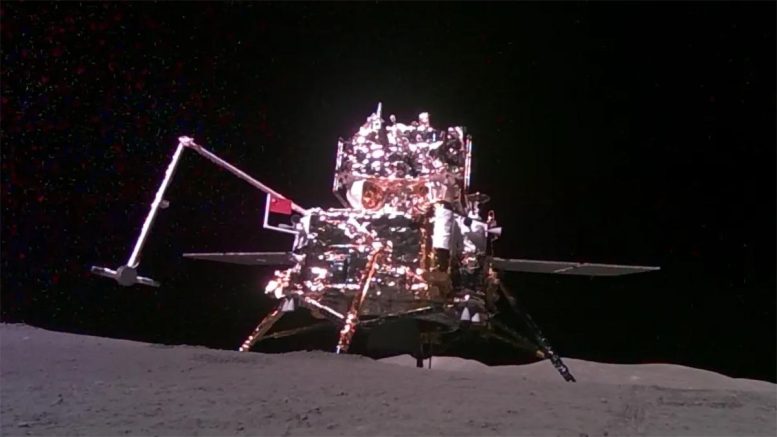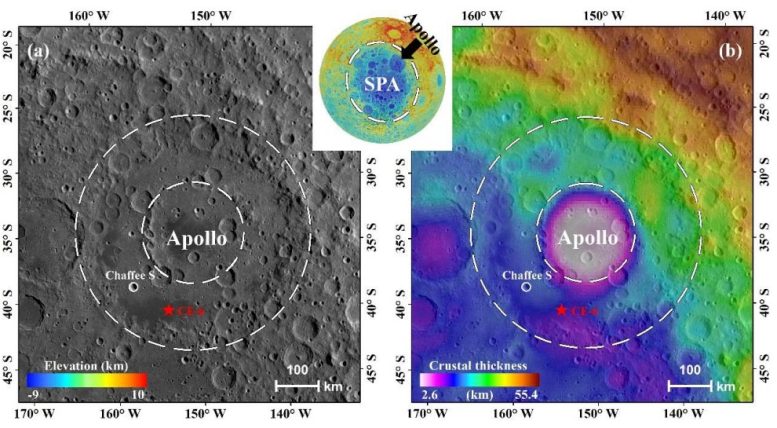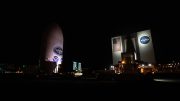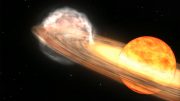
The Chang’e-6 mission may revolutionize our understanding of the Moon by providing farside samples that highlight geological differences and ancient impact effects. Credit: China National Space Administration
China’s Chang’e-6 mission is set to deliver samples from the Moon’s farside, potentially unveiling significant geologic variations and the effects of ancient meteorite impacts, which could enrich our knowledge of the Moon’s development and the early solar system.
China’s Chang’e-6 (CE-6) lunar probe is set to return to Earth on June 25, carrying the first surface samples collected from the far side of the Moon. In anticipation of this historic event, scientists from the Institute of Geology and Geophysics at the Chinese Academy of Sciences are publishing their predictions for the unique materials that may be found in the CE-6 samples in the journal The Innovation.
Predictions for Moon’s Farside Samples
Based on the geological characteristics of the probe’s landing site, the researchers anticipate that the returned surface samples will consist of 2.5-million-year-old volcanic rock combined with small amounts of material generated by nearby meteorite strikes. There is also the possibility that evidence of distant impacts will be found in the samples.
“There are significant differences between the farside and the nearside of the Moon in terms of lunar crustal thickness, volcanic activity, composition, etc., especially considering that CE-6 landed on the South Polar-Aitkin (SPA) basin, the special terrane of the Moon,” says first author Zongyu Yue, a geologist at the Chinese Academy of Sciences. “The CE-6 samples, being the first obtained from the far side of the Moon, are expected to answer one of the most fundamental scientific questions in lunar science research: what geologic activity is responsible for the differences between the two sides?”

This graphical abstract depicts the landing site of the lunar probe Chang’e-6. Credit: Yue et al./The Innovation
Expectations for Lunar Sample Analysis
Nearly 3 weeks ago, on June 2, CE-6 landed in the Apollo Crater, located at the edge of the largest depression on the Moon known as the SPA basin. The probe used core drilling and surface scooping to collect rocks and minerals that are likely to contain traces of early meteorite impacts. The data will reveal how far ejecta from early collisions spread across the Moon and whether there are any differences compared to what’s been recorded on the asymmetrical nearside.
“My greatest hope is that the CE-6 samples contain some impact melts (fragments generated when smaller bodies crashing into the Moon) from the Apollo Crater and the SPA basin, which can provide crucial constraints on the early impact flux of the Moon,” says Yue. “Once this information is obtained, it will not only help clarify the role of early lunar meteorite impacts on the Moon’s evolution, but also be of great significance in analyzing the early impact history of the inner solar system.”
The Future of Lunar Research
With 10 successful lunar sample return missions conducted on the nearside of the Moon, the CE-6 lunar probe samples represent the first collected from the far side of the Moon. Researchers expect their analysis in the coming months and years to contribute to a more comprehensive understanding of lunar evolution.
Reference: “Scientists eager for Chang’e-6 lunar farside samples to bring new discoveries” by Wei Yang, Yuyang He, Yuqi Qian and Zongyu Yue, 19 June 2024, The Innovation.
DOI: 10.1016/j.xinn.2024.100660
The study was supported by the National Key Research and Development Program of China, the Chinese Academy of Sciences, and Key Research Programs of IGGCAS.









Be the first to comment on "Mystery of the Moon’s Far Side Unraveled by China’s Chang’e-6 Lunar Probe"